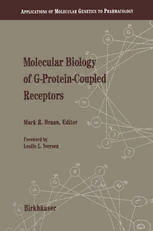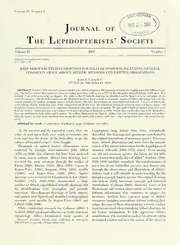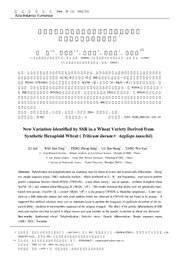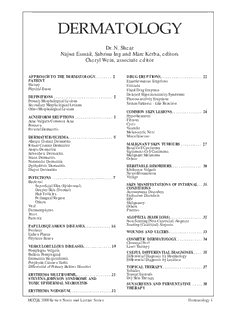
Preview Dermatology 2000 - Angelfire
DERMATOLOGY Dr. N. Shear Najwa Esmail, Sabrina Ing and Marc Kerba, editors Cheryl Wein, associate editor APPROACH TO THE DERMATOLOGY. . . . . . . . . 2 DRUG ERUPTIONS. . . . . . . . . . . . . . . . . . . . . . 22 PATIENT Exanthematous Eruptions History Urticaria Physical Exam Fixed Drug Eruption Delayed Hypersensitivity Syndrome DEFINITIONS. . . . . . . . . . . . . . . . . . . . . . . . . . . . . . . 2 Photosensitivity Eruptions Primary Morphological Lesions Serum Sickness - Like Reaction Secondary Morphological Lesions Other Morphological Lesions COMMON SKIN LESIONS. . . . . . . . . . . . . . . . 24 Hyperkeratotic ACNEIFORM ERUPTIONS . . . . . . . . . . . . . . . . . . . . 3 Fibrous Acne Vulgaris/Common Acne Cysts Rosacea Vascular Perioral Dermatitis Melanocytic Nevi Miscellaneous DERMATITIS/ECZEMA. . . . . . . . . . . . . . . . . . . . . . . 5 Allergic Contact Dermatitis Irritant Contact Dermatitis MALIGNANT SKIN TUMOURS. . . . . . . . . . . 27 Basal Cell Carcinoma Atopic Dermatitis Squamous Cell Carcinoma Seborrheic Dermatitis Malignant Melanoma Stasis Dermatitis Others Nummular Dermatitis Dyshydrotic Dermatitis HERITABLE DISORDERS. . . . . . . . . . . . . . . . 30 Diaper Dermatitis Ichthyosis Vulgaris Neurofibromatosis INFECTIONS . . . . . . . . . . . . . . . . . . . . . . . . . . . . . . . . 7 Vitiligo Bacterial SKIN MANIFESTATIONS OF INTERNAL. . 31 Superficial Skin (Epidermal) CONDITIONS Deeper Skin (Dermal) Autoimmune Disorders Hair Follicles Endocrine Disorders Periungual Region HIV Others Malignancy Viral Others Dermatophytes Pruritus Yeast Parasitic ALOPECIA (HAIR LOSS). . . . . . . . . . . . . . . . . 32 Non-Scarring (Non-Cicatricial) Alopecia Scarring (Cicatricial) Alopecia PAPULOSQUAMOUS DISEASES. . . . . . . . . . . . . . 16 Psoriasis WOUNDS AND ULCERS. . . . . . . . . . . . . . . . . . 33 Lichen Planus Pityriasis Rosea COSMETIC DERMATOLOGY. . . . . . . . . . . . . . 34 Chemical Peel VESICULOBULLOUS DISEASES. . . . . . . . . . . . . . . 19 Laser Therapy Pemphigus Vulgaris USEFUL DIFFERENTIAL DIAGNOSES. . . . 35 Bullous Pemphigoid Differential Diagnosis by Morphology Dermatitis Herpetiformis Differential Diagnosis by Location Porphyria Cutanea Tarda Differential of Primary Bullous Disorder TOPICAL THERAPY. . . . . . . . . . . . . . . . . . . . . 37 Vehicles ERYTHEMA MULTIFORME,. . . . . . . . . . . . . . . . . . 21 Topical Steroids STEVENS-JOHNSON SYNDROME AND Dry Skin Therapy TOXIC EPIDERMAL NECROLYSIS SUNSCREENS AND PERVENTATIVE . . . . . 38 THERAPY ERYTHEMA NODOSUM. . . . . . . . . . . . . . . . . . . . . . 22 MCCQE 2000 Review Notes and Lecture Series Dermatology 1 APPROACH TO THE DERMATOLOGY PATIENT Notes HISTORY o age, race, occupation, hobbies o details of skin eruption • location • onset • persistent/intermittent • factors affecting eruption (aggravating/relieving factors) o associated skin symptoms (itchiness/burning/pain/dry/discharge) o past history of skin eruptions o associated systemic symptoms o environmental and psychological factors o allergies, medications o past medical history o family history of skin and internal disease PHYSICAL EXAM o distribution o colour o type of lesion (see morphological definitions) o arrangement (annular, linear, etc...) o remember to examine hair, mucous membranes and nails DEFINITIONS PRIMARY MORPHOLOGICAL LESIONS Table 1. Types of Lesions < 1 cm diameter ‡ 1 cm diameter raised superficial lesion papule (e.g. wart) plaque (e.g. psoriasis) palpable deep (dermal) nodule (e.g. dermatofibroma) tumour (e.g. lipoma) lesion (not necessarily raised) flat lesion macule (e.g. freckle) patch (e.g. vitiligo) elevated fluid filled lesions vesicle (e.g. HSV) bulla (e.g. bullous pemphigoid) o pustule: a vesicle that contains purulent exudate (white, yellow, green) (e.g. pustular acne) o erosion: a disruption of the skin involving the epidermis alone o ulcer: a disruption of the skin that extends into the dermis or deeper o wheal: a special form of papule or plaque that is blanchable and transient, formed by edema in the dermis (e.g. urticaria) o scar: replacement fibrosis of dermis and subcutaneous tissue SECONDARY MORPHOLOGICAL LESIONS o crust: dried serum, blood, or purulent exudate originating from a lesion (e.g. impetigo) o scale: excess keratin (e.g. seborrheic dermatitis) o fissure: a linear slit-like cleavage of the skin o excoriation: a scratch mark o lichenification: thickening of the skin and accentuation of normal skin markings (e.g. chronic atopic dermatitis) o xerosis: dryness of skin, eyes and mouth o atrophy: histological decrease in size and number of cells or tissues OTHER MORPHOLOGICAL LESIONS o comedones: collection of sebum and keratin • open comedone (blackhead) • closed comedone (whitehead) o petechiae: hemorrhagic punctate spot, 1-2 mm in diameter, non-blanchable o purpura: extravasation of blood resulting in red discolouration o ecchymosis: macular red or purple hemorrhage > 2 mm diameter Dermatology 2 MCCQE 2000 Review Notes and Lecture Series ACNEIFORM ERUPTIONS Notes ACNE VULGARIS/COMMON ACNE (see Colour Atlas A5) o a common inflammatory pilosebaceous disease characterized by comedones, papules, pustules, inflamed nodules and cysts, with occasional scarring • predilection sites: face, neck, upper chest, back • more severe in males than females o pathogenesis • androgens stimulate increased sebum production • sebum is comedogenic, an irritant, and is converted to free fatty acids by microbial lipases made by anaerobic diphtheroid Propionibacterium acnes • free fatty acids + bacteria = inflammation plus delayed hypersensitivity reaction causing hyperkeratinization of follicle lining with resultant plugging o exacerbating factors • menstruation • oral contraceptive pill (OCP) (low estrogen formulations) • corticosteroids • lithium, iodides, bromides • comedogenic topical agents – some cosmetics, sunscreens, moisturizers, greases, tars • NB: foods are NOT a major aggravating factor o treatment based on severity of acne • 4 types of acne severity • I – Comedonal. Few lesions. No scarring • II – Papular. Moderate number of lesions. Little scarring • III – Pustular. Lesions > 25. Moderate scarring • IV – Nodulocystic. Severe scarring Table 2. Acne Types and Treatments Acne Type Treatment Type I – Non-inflammatory Benzoyl Peroxide (2.5%, 5%, 10%) – bactericidal Adapalene gel/cream • not irritating, no interaction with sun • expensive +/– Tretinoin (Retin-A) • comedolytic more sun-sensitive • start with 0.01% and increase to 0.025% after one month Type I – Inflammatory Benzoyl Peroxide Tretinoin/ Adapalene gel/cream Topical Antibiotic (clindamycin, erythromycin) • bacteriostatic and anti-inflammatory Type II Topical Antibiotic Benzoyl Peroxide Tretinoin/ Adapalene gel/cream Type III Topical Antibiotic Benzoyl Peroxide Tretinoin Oral Antibiotic (tetracycline, minocycline, erythromycin) Type IV Isotretinoin (Accutane) • 0.5 to 1.0 mg/kg/day for 3-4 months • baseline CBC, pregnancy tests, LFT, TG, and cholesterol prior to start of therapy • repeat tests at 2/6/10/14 weeks • S/E: teratogenic, skin and mucous membrane dryness, hyperlipidemia, reversible alopecia, abnormal LFT o other treatments • cryotherapy (for cysts) • intralesional steroids (for cysts) • dermabrasion • spironolactone – antiandrogen MCCQE 2000 Review Notes and Lecture Series Dermatology 3 ACNEIFORM ERUPTIONS Notes . . . CONT. • Diane-35 OCP (cyproterone acetate + ethinyl estradiol) • high-estrogen OCP o differential diagnosis • rosacea • folliculitis • perioral dermatitis ROSACEA (see Colour Atlas A6) o a chronic and recurrent inflammatory disorder of the pilosebaceous units and vasculature of the face characterized by telangiectases, flushing (due to capillary vasodilation), papules, and pustules o differentiated from acne by its absence of comedones • F>M, 30-50 years old • symmetrical; forehead, cheeks, nose, chin, eyes • may get conjunctivitis, blepharitis, episcleritis, or keratitis • may develop rhinophyma (nose enlargement) o prolonged course common, recurrences common, may disappear spontaneously o unknown pathogenesis o exacerbating factors • heat, cold, wind, sun, stress, drinking hot liquids, alcohol, caffeine, spices o treatment • topical • antibiotics (metronidazole 0.75% gel or cream, clindamycin or erythromycin have anti-inflammatory mechanisms) • systemic • tetracycline or erythromycin 250 mg qid then as needed • alternatives: minocycline • others • lasers for telangiectases • plastic surgery or laser for rhinophyma • camouflage makeup for erythema o differential diagnosis • SLE • carcinoid syndrome • acne vulgaris • perioral dermatitis PERIORAL DERMATITIS o discrete erythematous micropapules that often become confluent forming inflammatory plaques on perioral and periorbital skin o subset of acneiform conditions • initial lesions usually in nasolabial folds, symmetry common, rim of sparing around vermilion border of lips • 15 to 40 year old • females predominantly • can be aggravated by potent topical (fluorinated) corticosteroids o treatment • topical • metronidazole 0.75% gel or cream to area bid • systemic • tetracycline 500 mg bid until clear, then 500 mg daily for 1 month, then 250 mg daily for 1 additional month Dermatology 4 MCCQE 2000 Review Notes and Lecture Series DERMATITIS (ECZEMA) Notes o superficial inflammation of the skin, characterized by pruritic papulovesicles, redness, crusting, scaling, and lichenification secondary to scratching ALLERGIC CONTACT DERMATITIS o epidermal and dermal inflammation caused by cell-mediated delayed hypersensitivity reaction o clinical suspicion by discrete area of skin involvement o susceptibility to allergen is acquired and specific sensitivity usually persists indefinitely o allergens include poison ivy, rubber/latex, neomycin, dyes, lanolin, nickel o diagnosis by patch testing o treatment • avoid allergen and its cross reactants • wet compresses soaked in Burow’s solution (a drying agent), change q3h, betamethasone cream • systemic corticosteroids for extensive cases (prednisone 1mg/kg and reduce over 2 weeks) IRRITANT CONTACT DERMATITIS (see Colour Atlas A2) o eczema is ill-marginated o physical/chemical damage: damage to water and lipid-holding barrier, denaturing keratin and other proteins o irritants include soaps, weak alkali, detergents, organic solvents, alcohol, oils o irritant and allergic dermatitis accounts for 30% of industrial-related medical disability o treatment • avoidance, compresses, topical and oral steroids ATOPIC DERMATITIS (see Colour Atlas A3) o subacute and chronic eczematous reaction caused by Type I (IgE-mediated) hypersensitivity reaction (release of histamine) producing prolonged severe pruritus o increased personal or family history of atopy (asthma, eczema, hay fever) • 3% of infants – 50% clear by age 13, few persist > 30 years of age • polygenic inheritance: one parent > 60% chance for child; two parents > 80% chance for child o associated findings • keratosis pilaris (hyperkeratosis of hair follicles, “chicken skin”) • xerosis • atopic palms: prominent palmar creases • inflammation, lichenification, excoriations are 2º to relentless scratching Table 3. Phases of Atopic Dermatitis Phase Distribution Infant (onset at 2-6 months old) Face, scalp, extensor surfaces Childhood (>18 months) Flexural surfaces Adult Hands, feet, flexures, neck, eyelids, forehead, face, wrists o treatment • bath additive (Aveeno oatmeal) followed by application of unscented emollients, or menthol (cooling agent) • topical corticosteroids with oral antihistamines • avoid prolonged potent dose; hydrocortisone cream for maintenance • alternate with lubricants or tar solution • antibiotic therapy if 2º infection by S. aureus • avoid systemic corticosteroids MCCQE 2000 Review Notes and Lecture Series Dermatology 5 DERMATITIS (ECZEMA) Notes . . . CONT. SEBORRHEIC DERMATITIS (see Colour Atlas A4) o greasy, erythematous, yellow, non-pruritic scaling papules and plaques occurs in areas rich in sebaceous glands • sites: scalp, eyebrows, eyelashes, beard, face (flush areas, behind ears, forehead), trunk, body folds, genitalia • possible etiologic association with the yeast Pityrosporum ovale • increased incidence in AIDS and Parkinson’s patients o treatment • face: non-fluorinated hydrocortisone cream • scalp: salicylic acid in olive oil (to remove scale), 2% ketoconazole shampoo (Nizarole), low potency steroid lotion STASIS DERMATITIS (see Colour Atlas A1) o persistent skin inflammation of the lower legs with a tendency toward brown pigmentation, erythema, and scaling • commonly associated with venous insufficiency • complications: secondary bacterial infections, ulceration o treatment • support stocking • rest and elevate legs • moisturizer to treat xerosis • mild topical corticosteroids to control inflammation • surgical vein stripping for cosmetic reasons only NUMMULAR DERMATITIS o annular coin-shaped pruritic plaques • dry, scaly, lichenified • often associated with atopy and dyshydrotic eczema o treatment • potent corticosteroid ointment bid or intalesional triamcinolone injection if severe DYSHYDROTIC DERMATITIS o papulovesicular dermatitis of hand and foot; may become lichenified with scaly plaques o misnomer – pathophysiology is NOT related to sweating o treatment • topical • high potency corticosteroid with saran wrap occlusion to increase penetration • intralesional triamicinolone • systemic • prednisone in severe cases • antibiotics for 2º S. aureusinfection DIAPER DERMATITIS (see Pediatrics Notes) Dermatology 6 MCCQE 2000 Review Notes and Lecture Series INFECTIONS Notes BACTERIAL o often involve the epidermis, dermis, hair follicles or periungual region. o may also be systemic SUPERFICIAL (EPIDERMAL) Impetigo Vulgaris (see Colour Atlas F5) o acute purulent infection which appears vesicular and progresses to crusting (crust is golden yellow and appears stuck on) • agent: GABHS, S. aureus, or both • sites: commonly involves the face, arms, legs and buttocks • affected: preschool and young adults living in crowded conditions, poor hygiene, neglected minor trauma • complication: post-strep. glomerulonephritis o treatment • remove crusts and use saline compresses, plus topical antiseptic soaks bid • topical antibacterials such as mupirocin or fucidin, continued for 7-10 days after resolution • systemic antibiotics such as cloxacillin or cephalexin o differential diagnosis • infected eczema, herpes simplex, varicella Bullous Impetigo o scattered, thin walled bullae arising in normal skin and containing clear yellow or slightly turbid fluid with no surrounding erythema • agent: S. aureusgroup II elaborating exfoliating toxin • sites: trunk, intertriginous areas, face • affected: neonates and older children, epidemic especially in day care • complication: high levels of toxin in immunocompromised or young children may lead to generalized skin peeling or staphylococcal scalded skin syndrome (SSSS) o treatment • cloxacillin • topical antibacterials such as fucidin and mupirocin, continued for 7-10 days Erythrasma o infection of the stratum corneum that manifests as a sharply demarcated, irregularly shaped brown, scaling patch • agent: Corynebacterium minutissimum • sites: intertriginous areas of groin, axillae, intergluteal folds, submammary, toes • affected: obese, middle-aged, blacks, diabetics, living in warm humid climate • diagnosis: “coral-red” fluorescence under Wood’s light (365 nm) because of a water-soluble porphyrin o treatment • econazole cream applied bid and showers with povidone-iodine soap • erythromycin (250 mg qid for 14 days) for refractory cases or recurrences o differential diagnosis • tinea cruris (positive scraping for hyphae) • seborrheic dermatitis (no fluorescence) MCCQE 2000 Review Notes and Lecture Series Dermatology 7 INFECTIONS Notes . . . CONT. DEEPER (DERMAL) Table 4. Comparison of Erysipelas and Cellulitis Erysipelas (see Colour Atlas F8) Cellulitis upper dermis lower dermis/subcutaneous fat may be confluent, but well demarcated and poorly demarcated, not uniformly raised raised, often with vesicles Group A streptococcus GAS (most common), S. aureus (usually in significantly sized wounds, doesn’t spread as much), H. flu( especially periorbital in kids < 5 years old, may be blue), Pasteurella multocida (dog/cat scratch/bite) spreads through lymphatics; long term recurrent erysipelas can cause elephantiasis PAINFUL (once called St. Anthony’s fire) systemic symptoms: fever, chills, systemic symptoms less likely (but may headache, weakness have fever, leukocytosis and lymphadenopathy) more serious complications include scarlet fever, streptococcal gangrene, fat necrosis, coagulopathy face and legs commonly legs first line: Penicillin, Cloxacillin or Ancef first line: Cloxacillin or Ancef/Keflex second line: Clindamycin or Keflex second line: Erythromycin or Clindamycin If penicillin allergic, can use Erythromycin Cefuroxime in young kids; TMP/SMX + Metronidazole in diabetic foot infections (cid:109) check for history of trauma, bites, saphenous vein graft, etc..., but often no inciting cause identified (cid:109) rarely culture bacteria by skin/blood culture; clinical diagnosis. If suspecting necrotizing fasciitis, do immediate biopsy and frozen section histopathology (cid:109) DDx: DVT (less red, less hot, smoother), superficial phlebitis, RSD HAIR FOLLICLES Superficial Folliculitis o superficial infection of the hair follicle o pseudofolliculitis: inflammation of follicle due to friction, irritation or occlusion o acute lesion consists of a superficial pustule surrounding the hair • can occur on face (Staphylococcusmost common), beard area, scalp or legs, trunk (Pseudomonas), or back (Candida) • common in AIDS o treatment • topical antibacterial (fucidin, mupirocin or erythromycin), • oral cloxacillin for 7-10d • mupirocin for S. aureus in nostril and on involved hairy area Furuncles (Boils) o red, hot, tender, inflammatory nodules involving subcutaneous tissue that evolves from a Staphylococcus folliculitis • occurs where there are hair follicles and in areas of friction and sweat (nose, neck, face, axillae, buttocks) o if recurrent, rule out diabetes or hidradenitis suppurativa (if in groin or axillae) Dermatology 8 MCCQE 2000 Review Notes and Lecture Series INFECTIONS Notes . . . CONT. Carbuncles o deep seated conglomerate of multiple coalescing furuncles o treatment • incise and drain large carbuncles to relieve pressure and pain • if afebrile: hot wet packs, topical antibiotic • if febrile/cellulitis: culture blood and aspirate pustules (Gram stain and C&S) • cloxacillin for 1 to 2 weeks PERIUNGUAL REGION Paronychia o inflammation around nail • can cause nail dystrophy • acute: S. aureus, Streptococcus • chronic: C. albicans o treatment • avoid exposure to moisture • topical fucidin or clotrimazole OTHERS Syphilis o sexually transmitted infection caused by Treponema pallidum characterized by a painless ulcer (chancre) o following inoculation becomes a systemic infection with secondary and tertiary stages o primary syphilis (see Colour Atlas F11) • single red, indurated, PAINLESS, round/oval, indolent, chancre (buttonlike papule) that develops into painless ulcer with raised border and scanty serous exudate • chancre develops at site of inoculation after 3 weeks of incubation and heals in 4-6 weeks • regional non-tender lymphadenopathy appears < 1 week after onset of chancre • VDRL negative • darkfield examination (for primary) - spirochete in tissue fluid from chancre or lymph node aspirate • M:F = 2:1 • treatment: benzathine penicillin G 2.4 million units IM • differential diagnosis • chancroid: painful • HSV: multiple lesions o secondary syphilis (see Colour Atlas F13) • appears 2-10 weeks after initial chancre, and 2-6 months after primary infection • general exam: generalized lymphadenopathy, splenomegaly, +/– fever • lesions heal in 1-5 weeks, and may recur for 1 year • types of lesions 1. macules and papules, round to oval, flat top, scaling, non-pruritic, sharply defined, circular (annular) rash • trunk, head, neck, palms, soles, mucous membranes • differential diagnoses: pityriasis rosea, tinea corporis, drug eruptions, lichen planus 2. condyloma lata: moist papules around genital/perianal region • exudate teeming with spirochetes • differential diagnosis includes condyloma acuminata 3. mucous patches: macerated patches mainly found in oral mucosa • associated findings: pharyngitis, iritis, periostosis, “acute illness” syndrome - headache, chills, fever, arthralgia, myalgia, malaise, photophobia • VDRL positive • FTA-ABS +ve; –ve after 1 year following appearance of chancre • TPI +ve; darkfield +ve in all secondary syphilis except macular exanthem • serologic test may be –ve if undiluted serum, or if HIV-infected • treatment as for primary syphilis MCCQE 2000 Review Notes and Lecture Series Dermatology 9 INFECTIONS Notes . . . CONT. o tertiary syphilis • extremely rare • 3-7 years after secondary • main skin lesion: ‘Gumma’ - a granulomatous nodule • independent of other tertiary syphilis manifestations • VDRL: blood positive, CSF negative Gonococcemia (Disseminated Gonococcal Infection) o pustules on a purpuric erythematous base and hemorrhagic, tender, necrotic pustules (aka “arthritis-dermatitis syndrome”) • Gram negative diplococcus Neisseria gonorrheae • skin manifestations develop in gonococcemia with vasculitis • distal aspects of extremities • associated with fever, asymmetric oligoarticular arthritis, and tenosynovitis • conjunctivitis if infected via birth canal • examine contacts and notify authorities • look for syphilis and other STDs • avoid intercourse until negative cultures • do not confuse with skin lesion of meningococcemia: petechiae which may evolve into purpura and ecchymosis (see Colour Atlas F1) o treatment: ceftriaxone (drug of choice) VIRAL Herpes Simplex (see Colour Atlas F12) o grouped vesicles (herpetiform arrangement) on an erythematous base on skin or mucous membranes • transmitted via contact with erupted vesicles • primary • children and young adults • usually asymptomatic • may have high fever, regional lymphadenopathy, malaise • secondary • recurrent form seen in adults • prodrome of tingling, pruritus, pain • much more commonly diagnosed than primary HSV I o recurrent on face, lips o rarely on mucous membranes (rule out aphthous ulcer) o virus in posterior root ganglion (Gasserian ganglion of trigeminal nerve, sacral ganglion) o reactivated by: sunlight, fever, menstruation, stress, upper respiratory infection, physical trauma o differential diagnosis • impetigo • eczema HSV II o incubation 2-20 days o gingivostomatitis (entire buccal mucosa involved with erythema and edema of gingiva) o vulvovaginitis (edematous, erythematous, extremely tender, profuse vaginal discharge) o urethritis (watery discharge in males) o recurrent on vulva, vagina, penis, lasting 5-7 days o 8% risk of transmission to neonate via birth canal if mother is asymptomatic o diagnosis confirmed with –ve darkfield, –ve serology for syphilis, –ve bacterial cultures • Tzanck smear shows multinucleated giant epithelial cells with Giemsa stain • tissue culture and EM on vesicular fluid • skin biopsy (intraepidermal, ballooning degeneration, giant cells) o antibody titres increase 1 week after primary infection, however, increase in titres are not diagnostic of recurrence Dermatology 10 MCCQE 2000 Review Notes and Lecture Series
Description:The list of books you might like

Can’t Hurt Me: Master Your Mind and Defy the Odds

Mind Management, Not Time Management

Do Epic Shit

Atomic Habits James Clear

Le Lettere di Giovanni

Trade unions and democracy : Cosatu workers' political attitudes in South Africa

The Art of Whittling: Classic Woodworking Projects for Beginners and Hobbyists

Alcatel OneTouch Pop 7 User guide
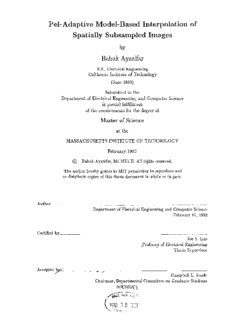
by

by Eshrag Ali Ahmad Refaee
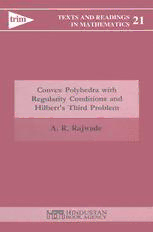
Convex Polyhedra with Regularity Conditions and Hilbert’s Third Problem
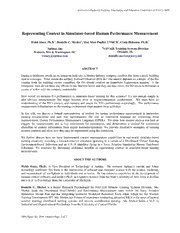
DTIC ADA473946: Representing Context in Simulator-based Human Performance Measurement

Python Scripting for ArcGIS
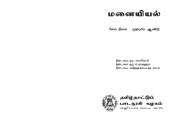
Home Science (Std11 - Tamil Medium)
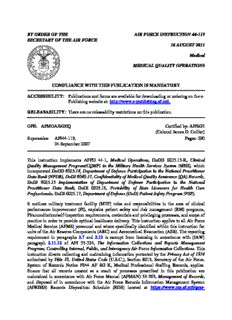
BY ORDER OF THE SECRETARY OF THE AIR FORCE AIR FORCE INSTRUCTION 44-119 16 ...
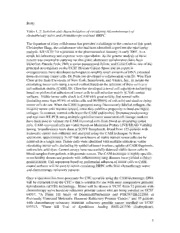
DTIC ADA453368: Gene Expression Analysis of Circulating Hormone Refractory Prostate Cancer
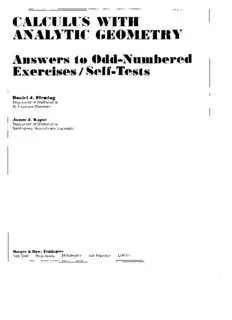
Calculus with analytic geometry

New records of Diptera from the Republic of Mordovia, Russia
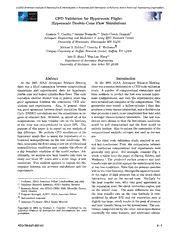
DTIC ADA455442: CFD Validation for Hypersonic Flight: Hypersonic Double-Cone Flow Simulations

DTIC ADA455440: RTO WG 10: CFD Validation for Shock Wave Turbulent Boundary Layer Interactions
